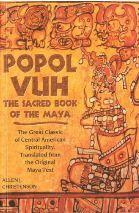As we explore the cradles of civilization, we come across the Indus Valley in which the ancient Indus people had settled and cultivated the land, creating cities with elaborate aqueducts and languages in which were undecipherable pictographs. In the book Awakening by Patrick S. Bresnan, Chapter 1: India Before the Vedas consists of the beginnings and the before. It talks of the land of India before civilization, of South Asia before the Vedic Age, of migration theories, and the caste system of the early settlers. However, a different focus on the land of India is portrayed in the video Indus: The Unvoiced Civilization. In this, the main focus is on that of the Indus Valley Civilization. It focuses on the people, the language, and the aqueducts. These two sources on the Indus Valley and its Civilization both share similarities and differences in the information they present which will be discussed here.
 |
| The region of the Indus Valley in early times |
In early civilizations, it is not uncommon for the people to worship a god or gods. And to do this worshipping, the role of a priest, a shaman, must step in. In the book, the mention of Brahmin caste differs in how the video mentions a priest. In the book, it states, “...the Brahmins were the priests. They were man’s link to the gods, and the entire society depended on them” (Bresnan 17). The book goes into fine detail about the Brahmin caste, which is the highest social class that falls right below the gods. We learn why the people worshipped them in the first place, their role in society, and their role in communicating with the gods. In the video, however, no mention of this caste is present. Instead, we see an excavation of an artifact and learn about what it represents. The video states, “This statue found in Mohenjo-Daro is called the Priest-King. From the trifoliate pattern on his clothing and his headdress, the statute appears to represent someone of high standing” (Indus 7:37). Its appearance resembles someone of high standing because it has robes and decorations of that of a priest. It shows us how they would have looked and given us insight into what they wore, unlike the book. The book does, however, give us information about the priests and their role whereas the video does not.
 |
| "Priest-King," artifact found at Mohenjo-Daro |
While the book talks about priests, the video shows us. The topic of the Brahmin, the priests, is portrayed differently in each source. “... the Brahmins would make the all-important contact with the gods, and, if correctly performed, persuade the gods… to exercise their powers on the community’s behalf” (Bresnan 20). In the book, there is a specific section in the chapter which tells us all we need to know about the Brahmin caste. It focuses on the origin of these people and why they are held in such high importance. However, the video treats the topic of the Brahmin caste, the priests, as a mystery, as only a few artifacts have been dug up. It states, “The statute is one of the few clues we have about the people of the Indus” (Indus 7:57). The artifact gives clues on who the people held in such high regard. People of low status would not usually get a statue made out of them. This honor would only be bestowed upon those with high importance. The video treats this artifact of a priest as a window into the world of the Indus people. Both of these sources give us different information on the topic presented, but it is through both that we learn more about the Brahmin and the Indus people.
Image Links:
https://www.ancient.eu/Indus_Valley_Civilization/
https://www.harappa.com/slide/priest-king-mohenjo-daro
Works Cited:
Bresnan, Patrick. Awakening: an Introduction to the History of Eastern Thought. Routledge, Taylor & Francis Group, 2018.
“Indus: The Unvoiced Civilization.” Films On Demand, Films Media Group, 2000, fod.infobase.com/PortalPlaylists.aspx?wID=237206&xtid=11655. Accessed 6 Feb. 2021.
Kenoyer, Jonathan Mark. Harappa, www.harappa.com/slide/priest-king-mohenjo-daro.
Mark, Joshua J. “Indus Valley Civilization.” Ancient History Encyclopedia, Ancient History Encyclopedia, 1 Feb. 2021, www.ancient.eu/Indus_Valley_Civilization/.



No comments:
Post a Comment